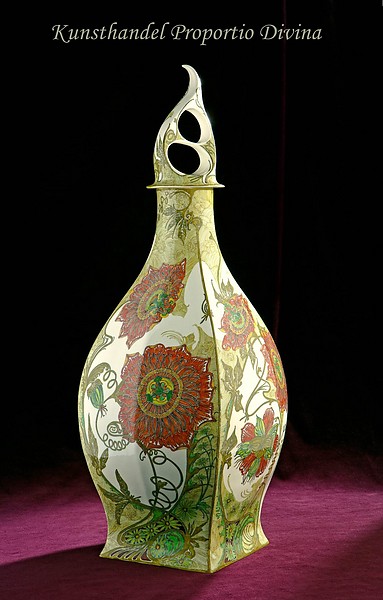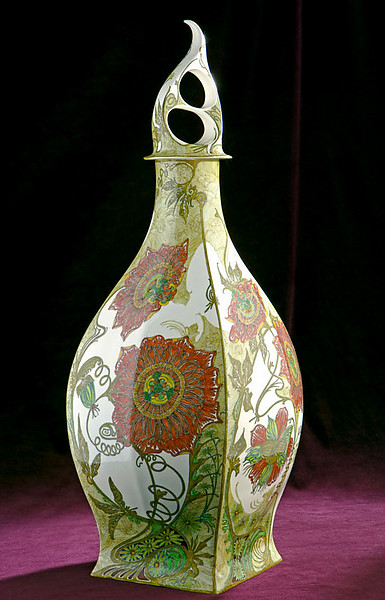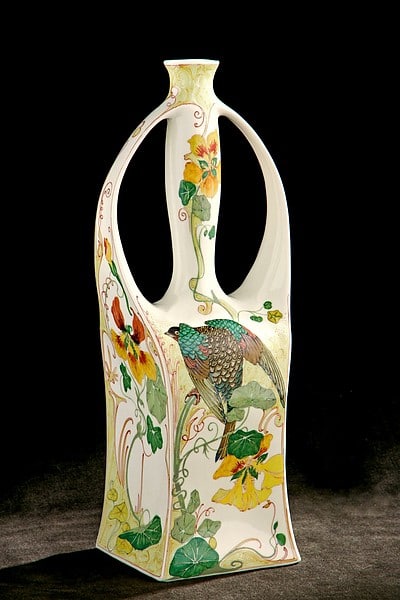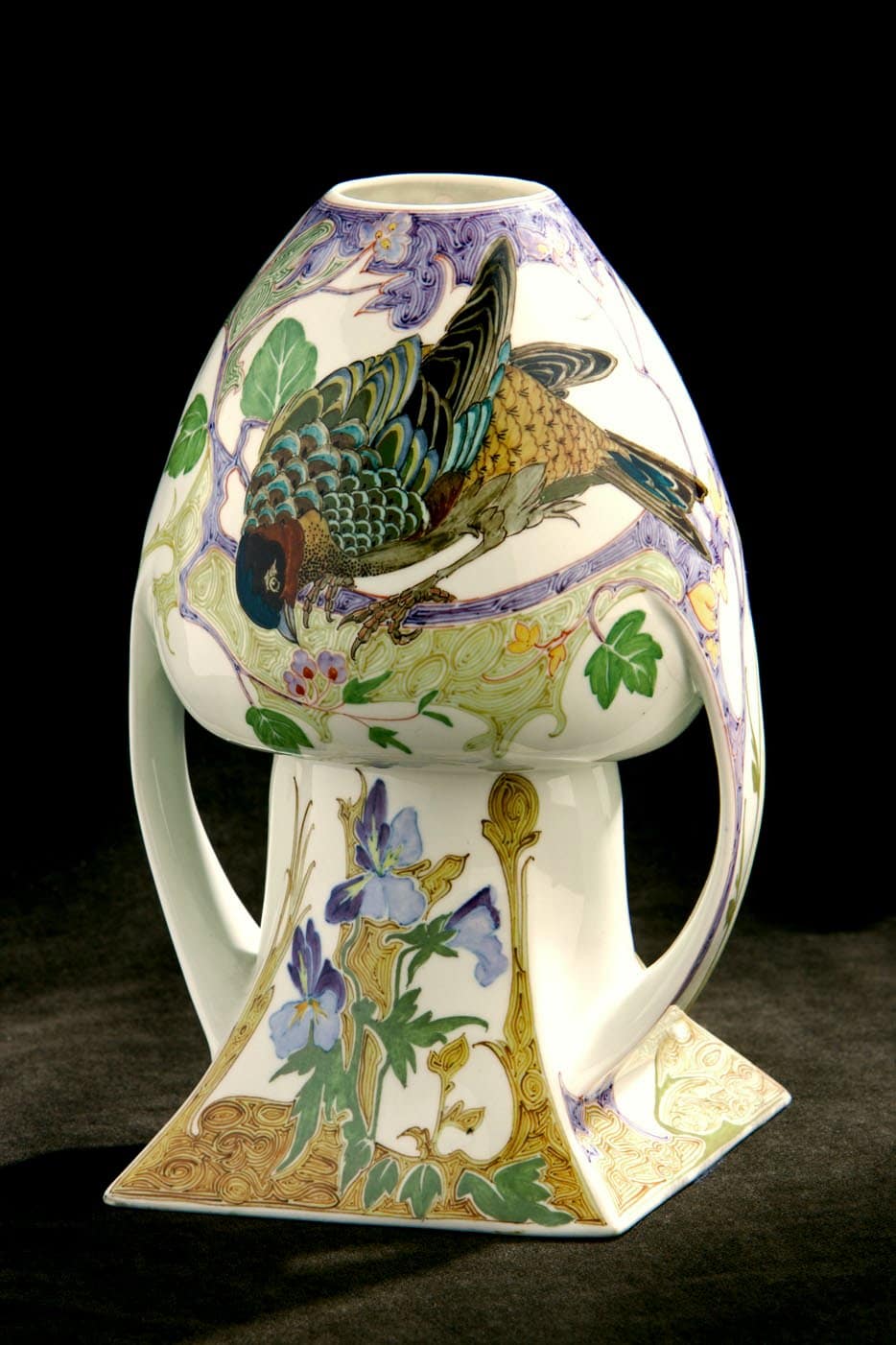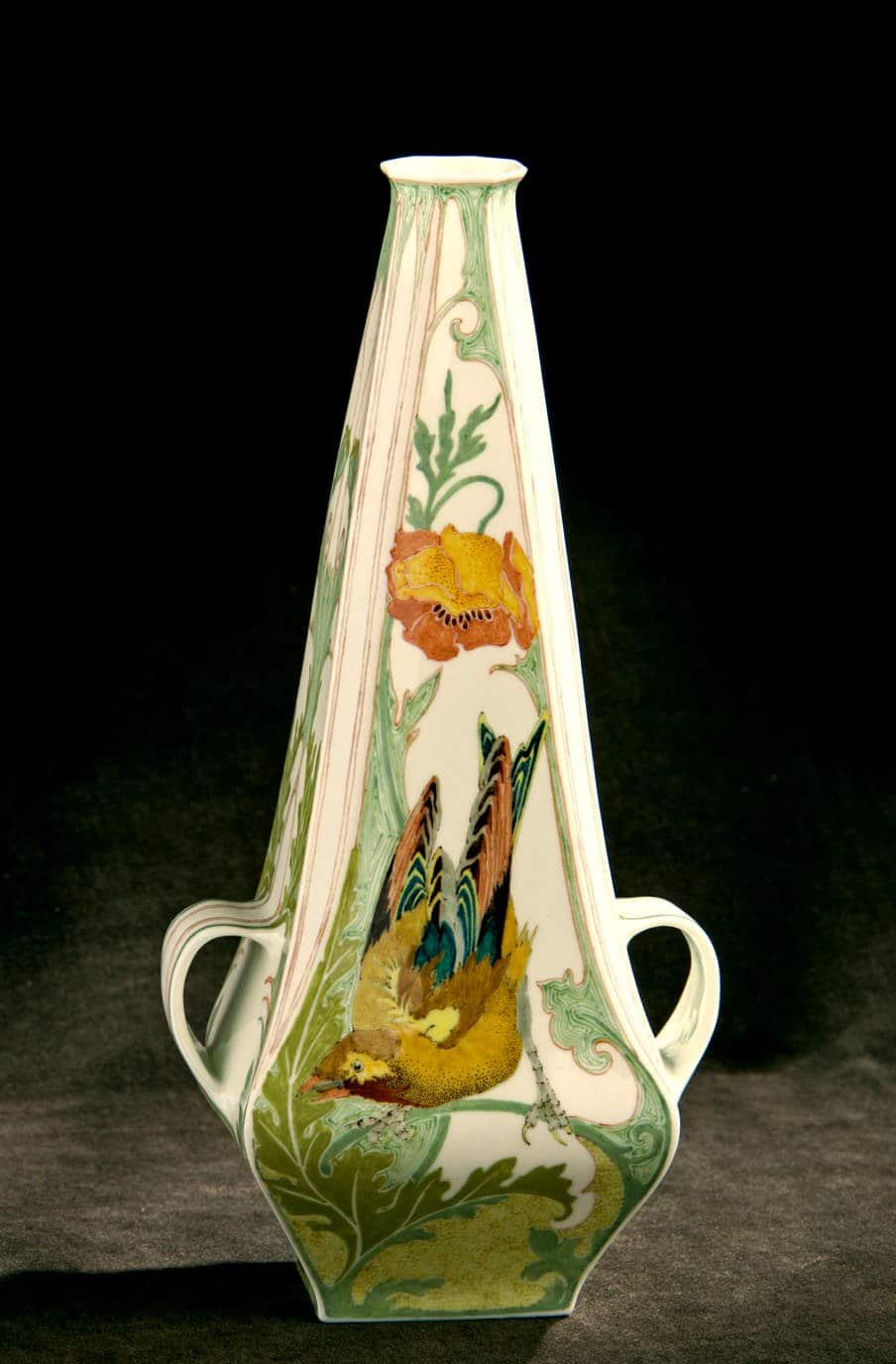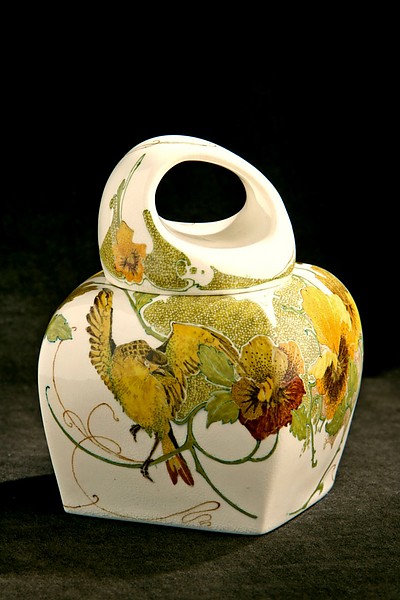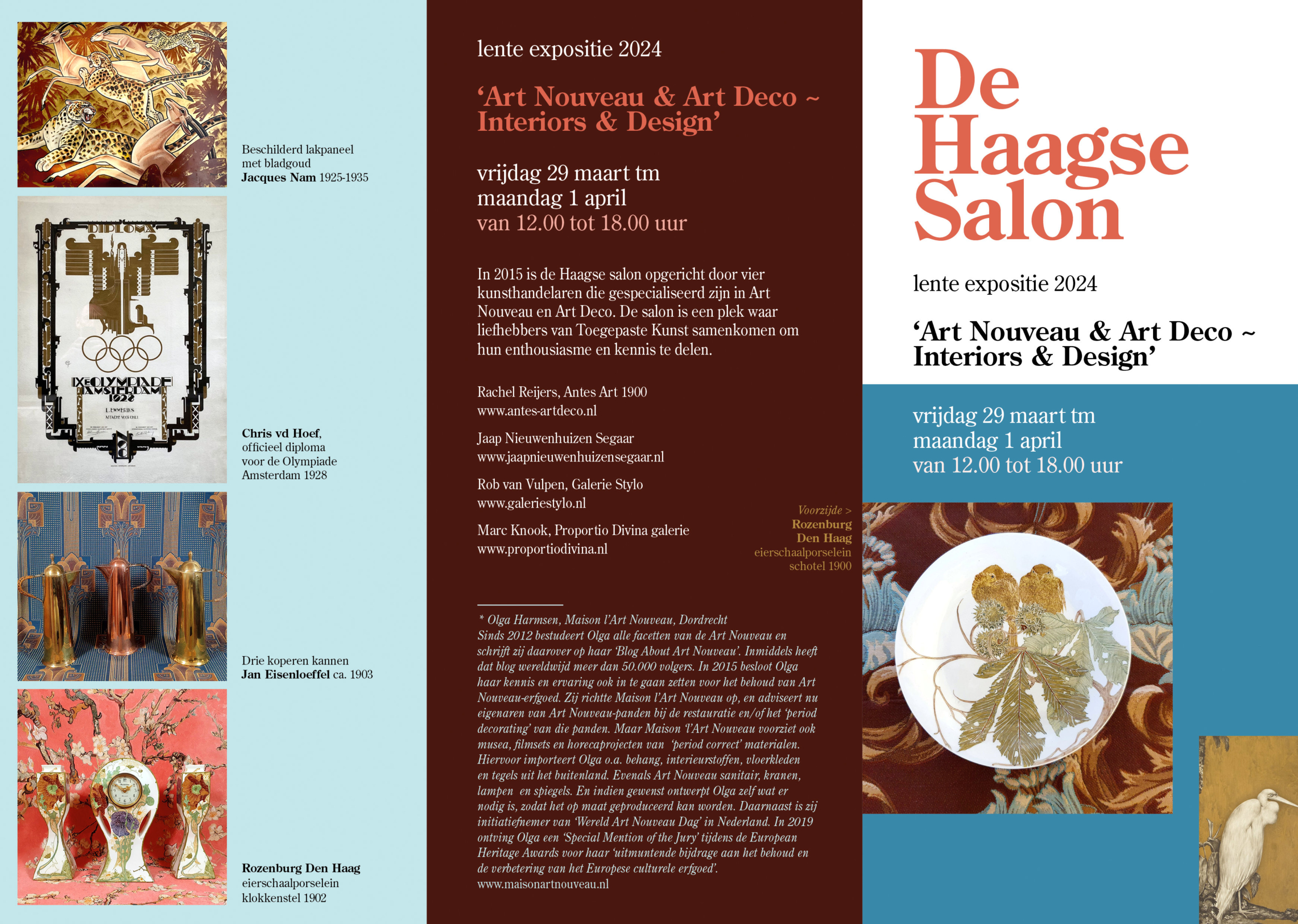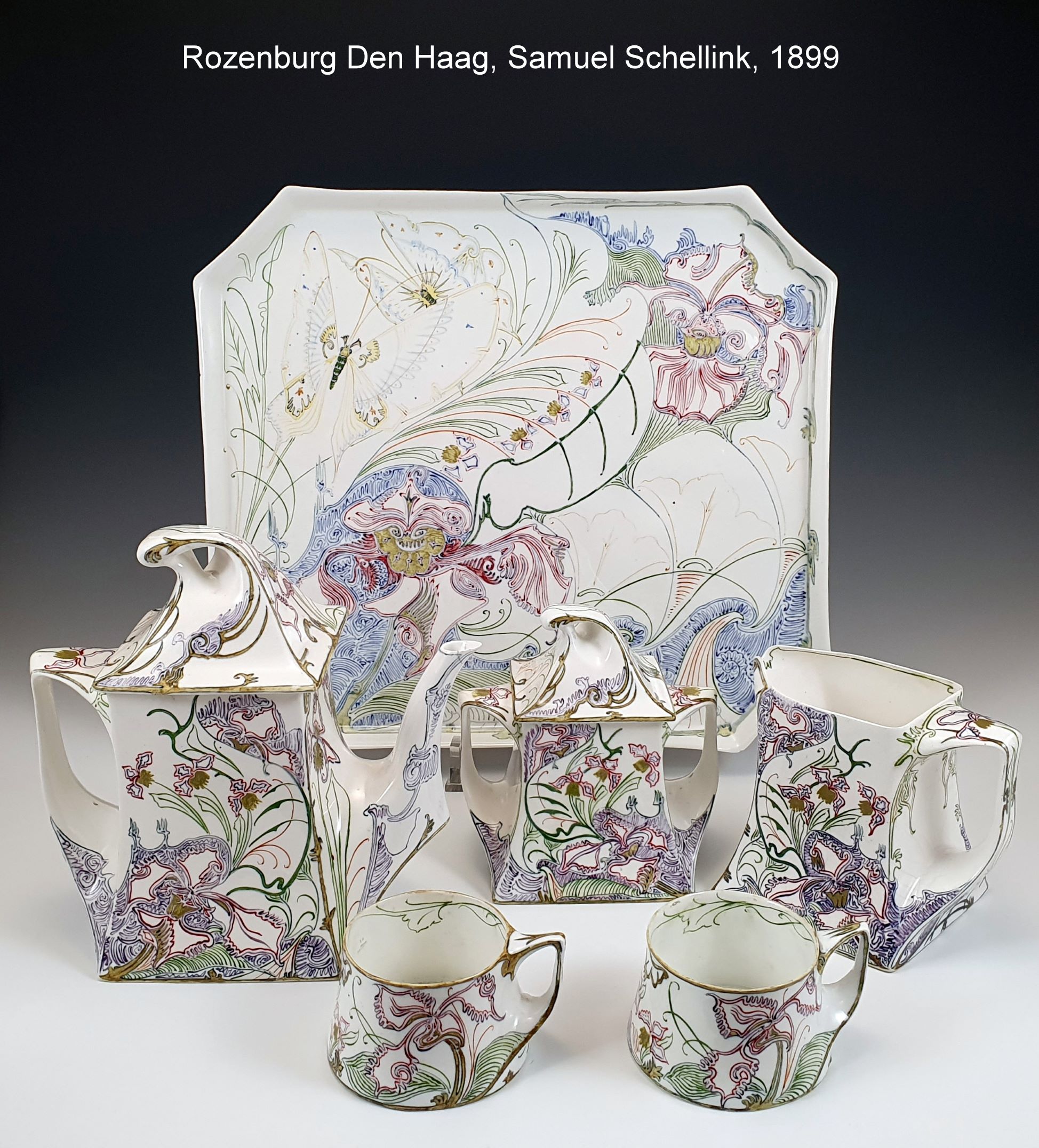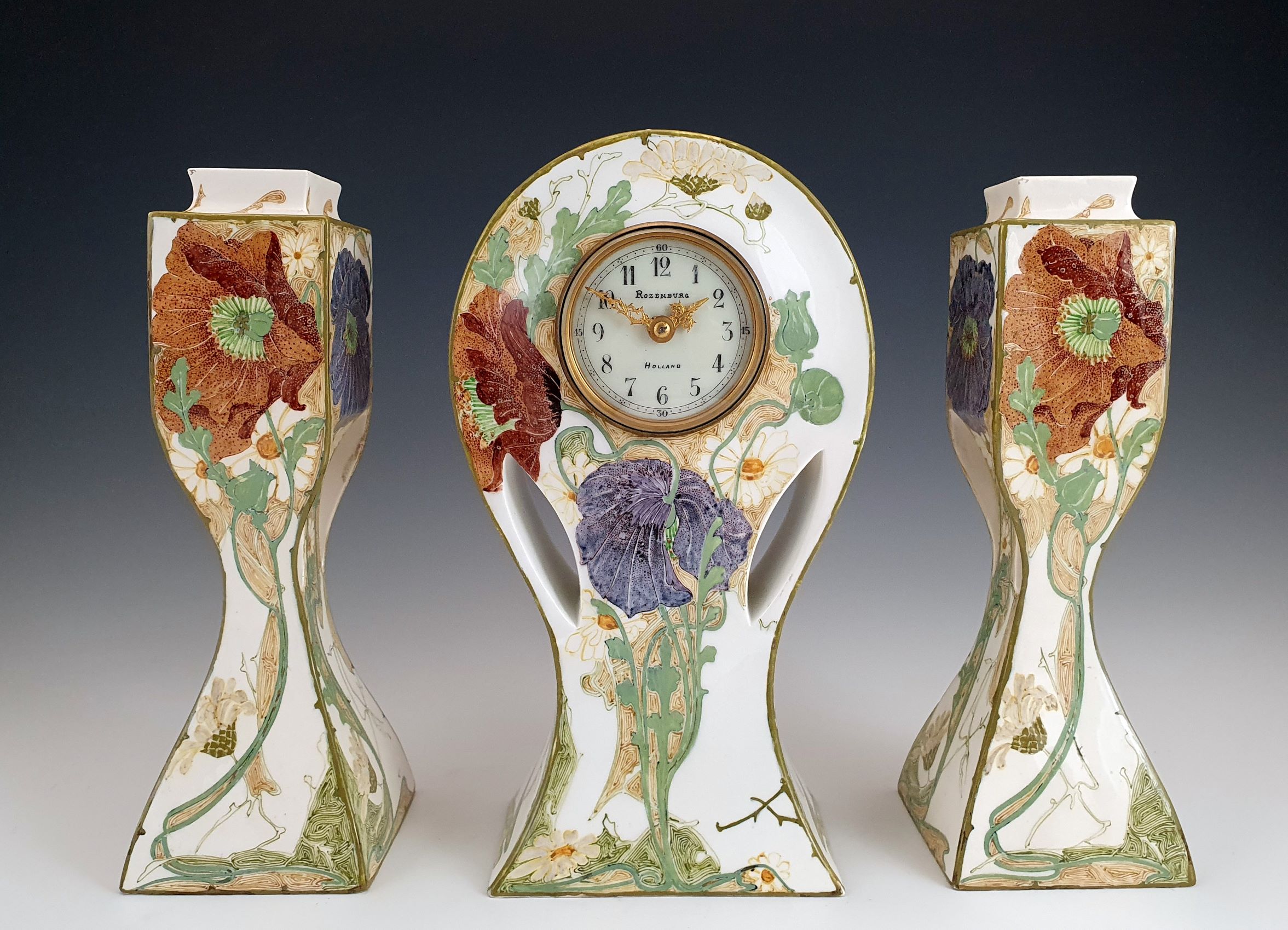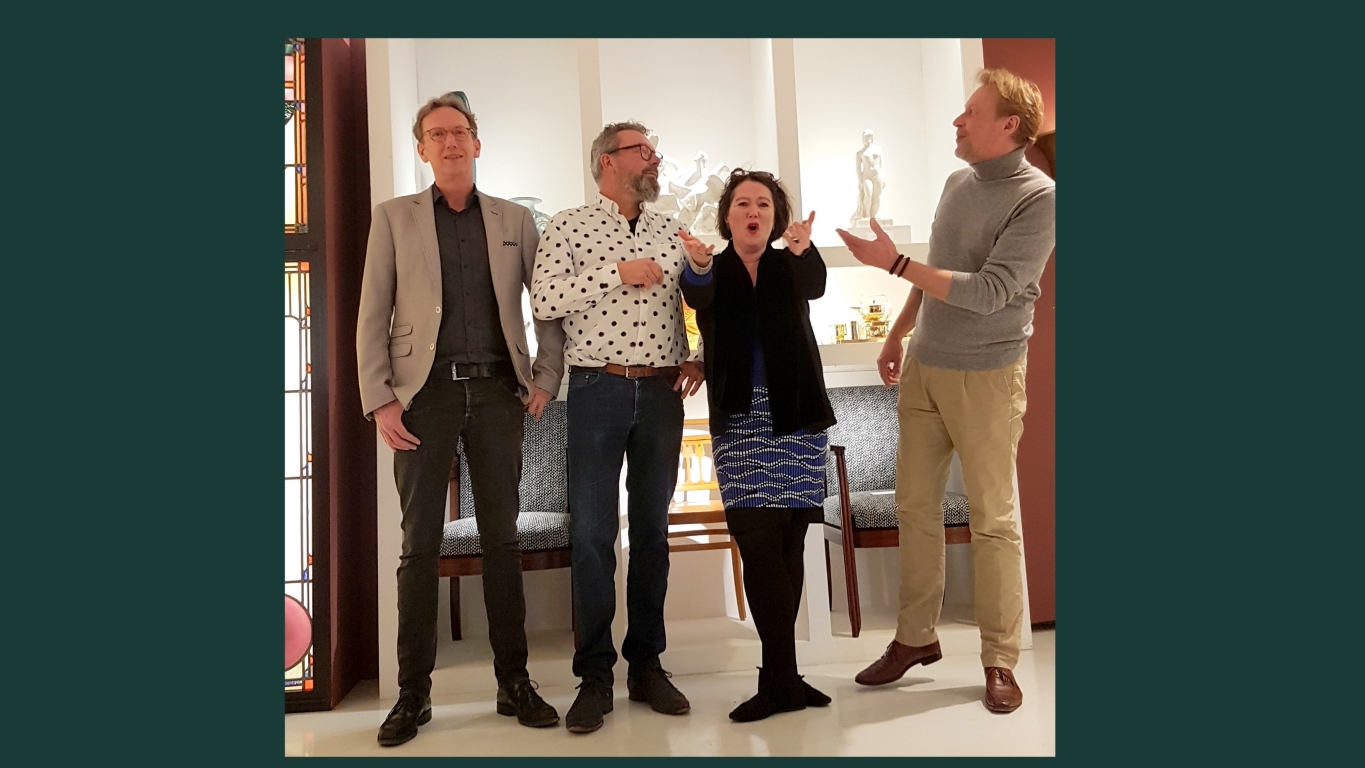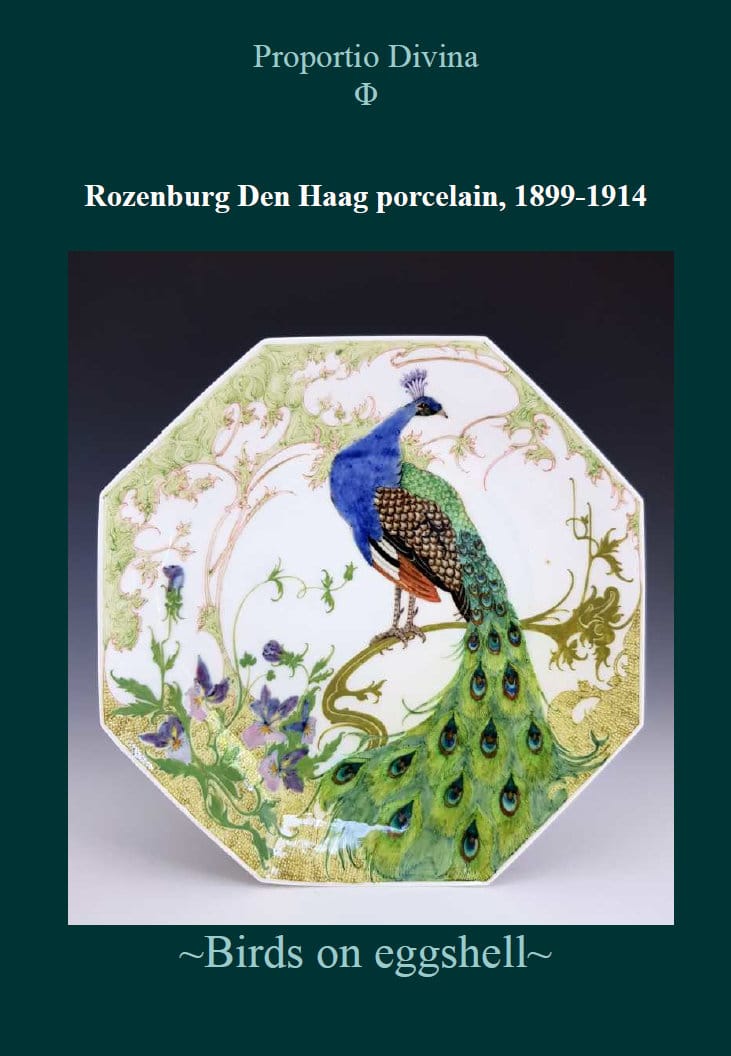An article about Rozenburg porcelain, published in Origine, together with highlights from our Rozenburg eggshell porcelain collection in April 2007. The centerpiece, a 60cm tall Rozenburg porcelain vase with plumed cover, was depicted life-size on one side of a foldout. On the other side a description of the vase and an article about Rozenburg porcelain. ( Translated from Dutch by Peter Boel, photographs by Fred van den Brink
Rozenburg Den Haag, Samuel Schellink, 1900
An extremely rare porcelain vase with a plumed cover, model 112. The colourful Art Nouveau decoration with passion flowers is executed differently on two sides of the vase, and then mirrored on the other two sides. The Rozenburg factory produced only nine copies of this vase, all of them in the year 1900. The vase was on display at the Paris World Exhibition,1900. There are two copies of this model in the Rijksmuseum collection, the Dutch royal family has at least one, and another copy is part of the collection of the Musée National de Ceramique in Sèvres. The vase is provided with Rozenburg’s green factory mark, the painter’s signature is by Samuel Schellink, the work order number is 373 in the year 1900. Height: 60 cm (23.6 inches)
Rozenburg porcelain, The Hague
The Hague, the year 1900
In the narrow city streets hangs a heavy smell of horse dung and faeces barrels in- and outside the houses. The litter in the canals lies rotting in smoke. Just a few streets further on, the large windows of the sales depots reflect the images of the sauntering rich. These department stores, as they are called, sell anything from clothes and household goods to exotic herbs. In this setting, in the spring of the year 1900, the ‘Haagsche Plateelfabriek Rozenburg’ has been preparing for already more than one year for the World Exhibition which is to be held in Paris in April. At the country estate ‘Rozenburg’, a man named Jurriaan Kok is working on the manufacturing of a completely new art product: porcelain in the strangest shapes – brilliantly and translucently white, feathery, and decorated in a great variety of colours.
The opening of the World Exhibition is rapidly approaching. The porcelain is carefully wrapped in straw and sent in wooden crates to Paris by steam train. It is there that Jurriaan Kok will finally be able to show his great invention to the world.
The Rozenburg factory was already widely known for its innovative earthenware models and revolutionary decorations. Among its clients were members of the Dutch royal family and prominent citizens like the writer Louis Couperus and the painter H.W. Mesdag. In the pavilion, the entire production was put on display. Shortly afterwards, everything was sold… The success of the porcelain during the World Exhibition, and the praise it received from all sides, took on proportions that we can hardly imagine today. After the Exhibition, the sales took place in the Rozenburg depot and in department stores throughout the country. A shop was opened in Paris and sales outlets were established in more than 15 cities all over the world – London, New York, Pretoria, Batavia.
Rozenburg’s huge success can be attributed to its incredibly innovative character. Both the brilliant designs of the models and the application of bright colours in the decorations caused astonishment. The boundaries of the technically possible were sought, which resulted in a characteristic diversity of the models’ shapes. The invention of applying the painting after the ‘biscuit heating’ (at high temperatures) instead of before, enabled Rozenburg to apply the same broad colour palette that it used on its pottery. Moreover, this procedure made the biscuit models so smooth that very delicate paintings could be applied on them.
One effect of this ‘biscuit heating’, however, was a large amount of reject. The clay would almost reach its melting point, causing about 50% of the objects to perish. Still, this had only a minor effect on the cost price, because the most expensive part of the production process was the painting. Quite frequently this made up 80% of the cost price!
In Rozenburg’s heyday the factory engaged no less than 82 painters, from apprentices to master painters. The latter, who were also the designers of the decorations, clearly drew their inspiration from pictures in the art magazine ‘Le Japon Artistique’, published by the renowned art dealer Siegfried Bing (of the L’Art Nouveau gallery in Paris). The master painters were held in high regard, and so they were handsomely rewarded with an average hourly wage of 43 cents. Various painters would work on one object, as the decorations were often highly complicated. Fortunately, the work order books of the painters, in which their fees were recorded per object, have been preserved. Thus, we have found out that no less than six painters worked on model 112 (seen in the large picture)! Consequently, this vase was the most expensive object in the Prix Courant de la Porcelaine, Rozenburg’s sale catalogue in 1900: 175 Dutch guilders!
The painting process was followed by the glazing process and the ‘polish heating’ (at a lower temperature). If at that stage a piece had to be rejected after all, this meant serious financial loss. At the time of production, the prices of Rozenburg porcelain were very high.
Price movements in the past 100 years have followed the appreciation of Dutch ‘New Art’ in general. However, Rozenburg porcelain is considered unrivaled in Dutch ceramics from this period, and it has been included in prominent museum and private collections both in the Netherlands and abroad. Rozenburg’s porcelain production remained limited. Only three hundred models were executed. It isn’t very hard to imagine that now, one hundred years later, the supply is very scarce. Despite this, if we take into account that the interest and appreciation for Art Nouveau are growing worldwide, the price level is still quite attractive.
